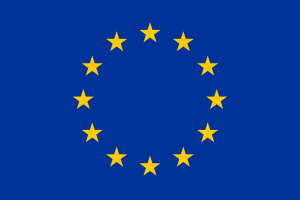Less plastic waste means cleaner beaches

Have you noticed anything different about the caps on plastic bottles lately? That is just one of the measures to tackle plastics pollution. Plastics are an important material in our economy that are everywhere in our daily lives but can present negative environmental and health impacts when misused.
Since July 3, single-use plastic bottles sold in the EU must come with their caps or lids attached. This may seem a small change, but its impact could be huge. Plastic caps or lids are part of the almost 26 million tonnes of plastic waste generated every year in Europe, much of which washes up on beaches around the world. Some 80% of marine litter is plastic. Why was the caps change introduced? It’s just one of the outcomes of the EU law on single-use plastics.
The law is part of a broader EU plastics strategy to protect the environment and human health by reducing plastic pollution and marine litter and accelerating our transition to a circular and resource-efficient plastics economy. The strategy lays out how the EU plans to reduce plastic waste across the entire spectrum of plastic production. The Single-use Plastics directive is not “against plastic”. It is against the unsustainable use and littering of plastic. Here are some of the areas where the EU is working on reducing plastic pollution.
Single-use plastics
Single-use plastic products are used once, or for a short period of time, before being thrown away. Under the EU’s rules on single-use plastics, the EU is tackling the 10 single-use plastic items most commonly found on Europe’s beaches and is promoting sustainable alternatives.
The 10 items are
- Cotton bud sticks
- Cutlery, plates, straws and stirrers
- Balloons and sticks for balloons
- Food containers
- Cups for beverages
- Beverage containers
- Cigarette butts
- Plastic bags
- Packets and wrappers
- Wet wipes and sanitary items
Where sustainable alternatives are easily available and affordable, single-use plastic products are banned from the EU market. This applies to cotton bud sticks, cutlery, plates, straws, stirrers, sticks for balloons and food and beverage containers made of expanded polystyrene, as well as all products made of oxo-degradable plastics. For other single-use plastic products, the EU is focusing on limiting their use through, for example, introducing design requirements, such as to connect caps to bottles.
Plastic bags
Lightweight plastic carrier bags are often used only once, but they take centuries to fully degrade in the natural environment. They are one of the top ten littered items in Europe. Under the Plastic Bags Directive, the EU requires EU countries to take measures to ensure that the consumption of lightweight plastic carrier bags is limited and annual consumptions targets reached. It also stipulates that EU countries may not allow such plastic carrier bags to be provided free of charge at the point of sale of goods or products, unless there is an equally effective alternative.
Plastic packaging
The EU’s rules on packaging harmonise national measures on packaging design and the management of packaging waste, as well as provide a high level of environmental protection. The latest amendment to these rules contains updated measures to prevent the production of packaging waste, and promote the reuse, recycling and other forms of recovering of packaging waste, instead of its final disposal. The rules set a target for recycling 50% of plastic packaging by 2025 and 55% by 2030.
Microplastics
Microplastics are small pieces of plastics, usually smaller than 5mm. They are persistent, very mobile and hard to remove from nature. A growing volume of microplastics is found in the environment, including in the sea and in soil, as well as in food and in drinking water. It has been estimated that between 200 and 600 Olympic-size swimming pools of microplastics are unintentionally released into the environment every year.
In 2023, the European Commission adopted a REACH restriction on microplastics intentionally added to products and a proposal for a law on preventing plastic pellet losses to the environment. The EU aims to reduce microplastic releases by 30% by 2030.
For more information





